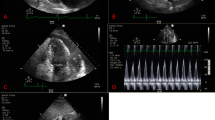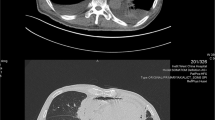Abstract
Purpose
Pseudomonas aeruginosa is commonly found in suppurative perichondritis, but the significant pathogens in non-abscess perichondritis are unclarified. We aimed to explore the bacterial findings and evaluate the effectiveness of different antibiotic regimes in the treatment of patients with perichondritis.
Methods
All patients treated for perichondritis at the two Ear–Nose–Throat Departments in Central Denmark Region (covering 20% of the Danish population) from January 1990 to October 2018 were included.
Results
In total, 112 patients with (n = 12) or without (n = 100) abscess were included in the study. Potential pathogens were found in 40 of 55 cultures. P. aeruginosa was recovered in 58% of abscess cases, while Staphylococcus aureus was predominant in non-abscess infections (49%). Eighty-two percent of S. aureus recovered were isolated as heavy or moderate growth. In non-abscess cases, no significant differences in clinical progress (p = 0.65), alteration in antibiotic therapy (p = 0.31), duration of hospitalization (p = 0.65), or frequency of relapse of infection (p = 1.00) or sequelae (p = 0.38) were found between patients treated with antibiotics covering S. aureus vs. P. aeruginosa.
Conclusions
Our findings suggest that intravenous antibiotic therapy covering S. aureus is sufficient and appropriate empirical treatment in the majority of patients with non-abscess perichondritis. Antibiotic coverage should be expanded to include P. aeruginosa if the clinical response is disappointing or cultures grow P. aeruginosa. The risks and downsides to this approach seems limited as only a minority of patients suffered (minor) cosmetic sequelae and relapse of infection in our cohort of non-abscess perichondritis patients initially treated with antibiotics not covering P. aeruginosa.
Similar content being viewed by others
References
Sosin M, Weissler JM, Pulcrano M, Rodriguez ED (2015) Transcartilaginous ear piercing and infectious complications: a systematic review and critical analysis of outcomes. Laryngoscope 125:1827–1834
Prasad HK, Sreedharan S, Prasad HS, Meyyappan MH, Harsha KS (2007) Perichondritis of the auricle and its management. J Laryngol Otol 121:530–534
Davidi E, Paz A, Duchman H, Luntz M, Potasman I (2011) Perichondritis of the auricle: analysis of 114 cases. Isr Med Assoc J 13:21–24
Liu ZW, Chokkalingam P (2013) Piercing associated perichondritis of the pinna: are we treating it correctly? J Laryngol Otol 127:505–508
Mitchell S, Ditta K, Minhas S, Dezso A (2015) Pinna abscesses: can we manage them better? A case series and review of the literature. Eur Arch Otorhinolaryngol 272:3163–3167
Davis O, Powell W (1985) Auricular perichondritis secondary to acupuncture. Arch Otolaryngol 111:770–771
Rowshan HH, Keith K, Baur D, Skidmore P (2008) Pseudomonas aeruginosa infection of the auricular cartilage caused by "high ear piercing": a case report and review of the literature. J Oral Maxillofac Surg 66:543–546
Thomas JM, Swanson NA (1988) Treatment of perichondritis with a quinolone derivative–norfloxacin. J Dermatol Surg Oncol 14:447–449
Noel SB, Scallan P, Meadors MC, Meek TJ Jr, Pankey GA (1989) Treatment of Pseudomonas aeruginosa auricular perichondritis with oral ciprofloxacin. J Dermatol Surg Oncol 15:633–637
Bassiouny A (1981) Perichondritis of the auricle. Laryngoscope 91:422–431
Bland M (2000) An introduction to medical statistics, third edition (chapter 12). Oxford University Press.
Author information
Authors and Affiliations
Corresponding author
Ethics declarations
Conflict of interest
None.
Ethical approval
According to Danish law, no ethical approval was necessary in this retrospective study.
Informed consent
According to Danish law, it is illegal to contact patients to obtain informed consent in retrospective studies, but permission to conduct the study was given by the Danish Patient Safety Authority (# 3-3013-2825/1).
Additional information
Publisher's Note
Springer Nature remains neutral with regard to jurisdictional claims in published maps and institutional affiliations.
Rights and permissions
About this article
Cite this article
Klug, T.E., Holm, N., Greve, T. et al. Perichondritis of the auricle: bacterial findings and clinical evaluation of different antibiotic regimens. Eur Arch Otorhinolaryngol 276, 2199–2203 (2019). https://doi.org/10.1007/s00405-019-05463-z
Received:
Accepted:
Published:
Issue Date:
DOI: https://doi.org/10.1007/s00405-019-05463-z




